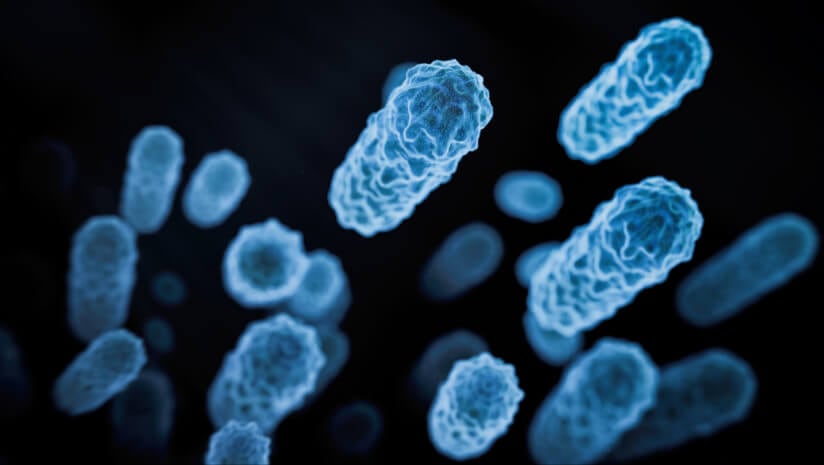Probiotics and prebiotics in confectionery like chocolate and candy are growing in popularity as functional confectionery takes off, appealing to shoppers’ calls for treats that do more than satisfy their sweet tooth. As the better-for-you confectionery trend brings healthier alternatives to the sector, ingredients that support better functioning create a significant opportunity for manufacturers.
A recent study exploring the role of prebiotics and probiotics as functional ingredients in confectionery confirms they’re becoming a huge trend in food tech, creating lots of opportunities for producers to launch NPD with prebiotic and probiotic ingredients and claims.
Many products from brands like Savvy Sweets and Bio&Me are also already in the marketplace, and sales of gut-friendly products are increasing. However, delivering prebiotics and prebiotics in confectionery also has its challenges.
So what are prebiotics and probiotics’ roles in functional confectionery, and what obstacles must they overcome to enable them to grow?
What are prebiotics and probiotics?
If prebiotics help create a healthy gut, probiotics help to maintain it.
Human microflora refers to the bacteria and other organisms that reside within the gut. Prebiotics are the foods, often high in fibre, that feed our body’s microflora and help improve the balance of microorganisms in our gut.
According to the International Scientific Association for Probiotics and Prebiotics (ISAPP), prebiotics can offer consumers various health benefits, including improving digestive function, supporting the body’s natural defences, creating better mineral absorption, and helping to regulate our desire to eat, energy balance and glucose metabolism.
Probiotics are foods or supplements that contain live microorganisms. These are designed to maintain or improve the good bacteria in our bodies and keep a balanced or healthy microflora. The ISAPP says these live microorganisms can also support health by supporting immune system functioning, breaking down foods by helping digestion, keeping harmful microorganisms in check, and producing vitamins that help absorb nutrients.
If prebiotics help create a healthy gut, probiotics help to maintain it.
Human microflora refers to the bacteria and other organisms that reside within the gut. Prebiotics are the foods, often high in fibre, that feed our body’s microflora and help improve the balance of microorganisms in our gut.
According to the International Scientific Association for Probiotics and Prebiotics (ISAPP), prebiotics can offer consumers various health benefits, including improving digestive function, supporting the body’s natural defences, creating better mineral absorption, and helping to regulate our desire to eat, energy balance and glucose metabolism.
Probiotics are foods or supplements that contain live microorganisms. These are designed to maintain or improve the good bacteria in our bodies and keep a balanced or healthy microflora. The ISAPP says these live microorganisms can also support health by supporting immune system functioning, breaking down foods by helping digestion, keeping harmful microorganisms in check, and producing vitamins that help absorb nutrients.
Prebiotics and probiotics in functional confectionery
In a recent 2024 study, published in the Journal of Chemistry and Technologies, researchers highlight the problem of gastrointestinal diseases that have emerged in recent years among the global population. Dysbiosis, which refers to a change in microbiota that turns a healthy pattern in the gut to one connected with disease, is getting a lot of attention from scientists as almost 90% of the population suffer from it in some way, the researchers state.
The study’s researchers looked at how developing more functional sweet treats and formulating confectionery with prebiotics and probiotics may help lessen dysbiosis.
Creating confectionery items with specific functional properties is a significant trend in food tech and modern demands in nutrition, economics and marketing see this trend evolve.
They confirmed the functional confectionery sector is currently considered a niche market, but is experiencing rapid growth as confectionery producers seek new methods to distinguish their products from those of competitors. Experts anticipate continued rapid growth in this market over the next few years.
Scientists in this study analysed the confectionery market for products correcting
intestinal microflora. They noted how researchers have developed a fatty filling for flour-based confectionery products to see how using vegetable raw materials can affect the product’s organoleptic properties.
Researchers confirm that various types of chocolate with probiotics in formulations have a high demand in the industry. In one study, researchers developed different confectionery formulations with hazelnut paste and probiotics like bifidobacteria (BB-12). They found these were stable at high ambient temperatures, had an extended shelf life, a pleasant taste, and high nutritional value.
Scientists have also created chocolate with synbiotics, including flax seeds like Linum usitatissimum L. as a prebiotic. They found that chocolate with synbiotics has improved antioxidant activity and physiological properties, which can benefit human intestinal health and have excellent nutritional value.
Researchers have developed chocolate candies with prebiotics from pumpkin seeds too. The researchers analysed candy samples for their quality, including colour, texture, and sensory acceptability, compared with a control batch to assess their stability. They found that those with prebiotics can provide health benefits by nurturing the growth of probiotics in the gut.
These researchers will focus their future research on validating the selection of prebiotics and probiotics for use in confectionery recipes, determining the product range and exploring how these ingredients affect the quality of both semi-finished and finished confectionery products.
Pros of prebiotics and probiotics in confectionery

There are numerous advantages to creating confectionery, particularly chocolate with prebiotics and probiotics.
Probiotic stability is a key benefit. “There is potential for enhanced probiotic stability due to the protective effects of the chocolate,” says Bob Hutkins, Professor Emeritus of Food Science, University of Nebraska, Department of Food Science and Technology at Nebraska Food for Health Center. Core ingredients in chocolate like cocoa butter, sugar, and low water activity help create this stability.
Currently, there is a lot of innovation in incorporating probiotics into chocolate products like truffles and bonbons to enhance stability. “Most chocolates, held at room temperature, are best consumed within about a year or so, which is about as long as many probiotic microbes will remain viable,” adds Hutkins.
“The bottom line is that chocolate can be a very good carrier for probiotics,” notes Hutkins.
Chocolate may also provide a protective function, further delivering more probiotics to the gut and improving gut health. “It’s been reported in the literature using laboratory models that chocolate may also protect probiotic microbes during digestion, so more cells reach the gut alive and well,” says Hutkins.
Prebiotics in chocolate also appeal to consumers and manufacturers looking for formulations with reduced sugar. “Some prebiotics add sweetness, so it’s possible to reduce the sugar in the chocolate,” Hutkins shares. In candy products like gummies, prebiotics such as inulin and Fructo-oligosaccharides (FOS) are useful for sugar reduction and replacement, Tessa Porter, a confectionary scientist at the University of Nebraska and consultant at Sprinkk says.
Both prebiotics and probiotics connect with better immune functioning and functional confectionery. They can appeal to consumers looking for confectionery that supports better nutrition. Dark chocolate, in particular, contains antioxidants and other bioactive substances. “Adding clinically studied probiotics/prebiotics could enhance nutritive quality, “Hutkins highlights.
Confectionery brands that include prebiotic and probiotic ingredients certainly have marketing advantages. “Who doesn’t like chocolate with added health benefits?” says Hutkins.
Challenges in prebiotics and probiotics in confectionery today
Several key obstacles still exist in formulating confectionery with prebiotics and probiotics however, namely achieving optimum temperatures, textures and quantities of ingredients.
“It is essential that incorporating probiotics into tempered chocolate occurs at a temperature that is not harmful to the probiotic bacteria, so maximum viability is retained,” says Hutkins.
Temperatures and moisture are also key hurdles in candy development. “Processing temperatures and moisture levels are challenging for probiotic viability,” Porter shares.
Probiotics are produced and sold commercially as powders, so ensuring they are well-dissolved can be challenging. Chocolate is expected to have a perfectly smooth texture, so even a slightly gritty mouthfeel is undesirable.
“For prebiotics, getting an adequate dose, perhaps as much as 2.5g, is also a challenge, depending on the portion size,” adds Hutkins.


